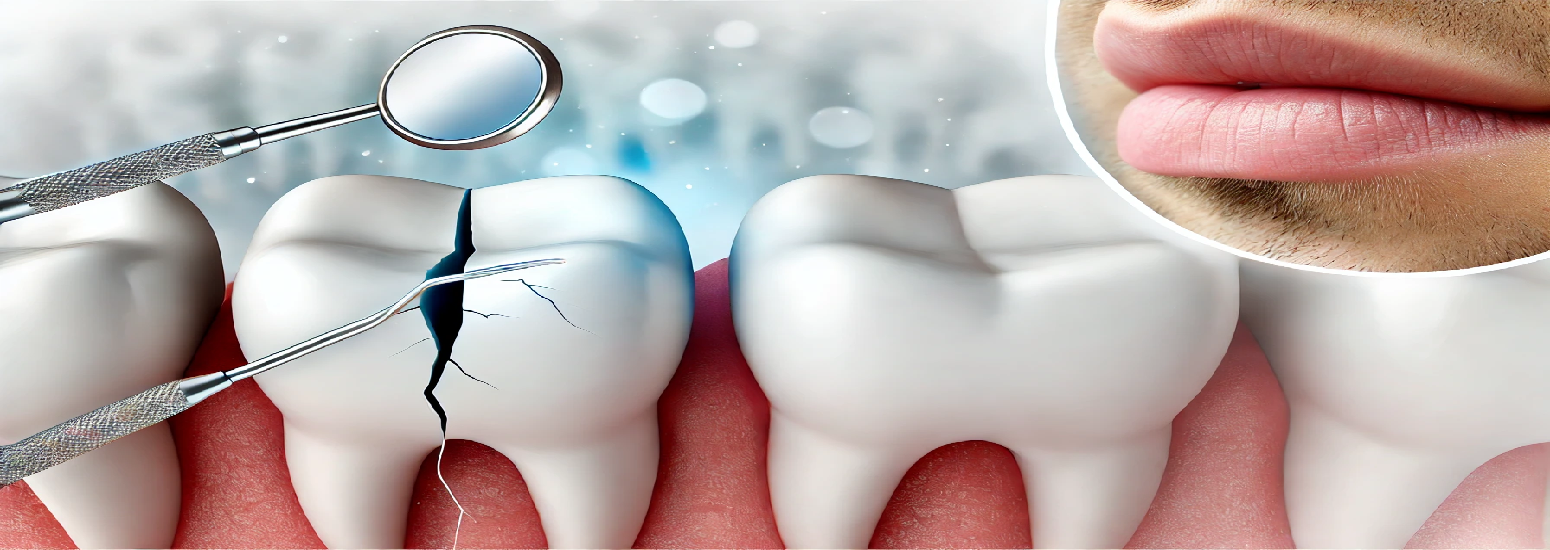
Some teeth have cracks that are too small to show up on X-rays. Sometimes the cracks are under the gum. These small cracks are known as cracked tooth syndrome. Cracked tooth syndrome is most common in lower back teeth . That's because these teeth absorb most of the forces of chewing.

Some people grind or clench their teeth. These people may be more likely to have cracked tooth syndrome. Sometimes, the way a person's teeth come together can put too much pressure on one tooth. This can cause the teeth to crack.
If you grind or clench your teeth, talk to your dentist about treatment. Grinding can increase your risk of cracked tooth syndrome.
There are many different types of cracked teeth. The treatment and outcome for your tooth depends on the type, location, and extent of the crack.
Craze lines:
These are tiny cracks that affect only the outer enamel. These cracks are extremely common in adult teeth. Craze lines are very shallow, cause no pain, and are of no concern beyond appearances.
Cusp Fracture:
When a cusp becomes weakened, a fracture sometimes results. The weakened cusp may break off by itself or may have to be removed by the dentist. When this happens, the pain will usually be relieved. A fractured cusp rarely damages the pulp, so root canal treatment is seldom needed. Your tooth will usually be restored with a full crown by your dentist.
Tooth Crack:
This crack extends from the chewing surface of the tooth vertically towards the root. A cracked tooth is not completely separated into two distinct segments. Because of the position of the crack, damage to the pulp is common. Root canal treatment is frequently needed to treat the injured pulp. Your dentist will then restore your tooth with a crown to hold the pieces together and protect the cracked tooth.

Split Tooth:
A split tooth is often the result of the long term progression of a cracked tooth. The split tooth is identified by a crack with distinct segments that can be separated. A split tooth cannot be saved intact. The position and extent of the crack, however, will determine whether any portion of the tooth can be saved. In rare instances, endodontic treatment and a crown or other restoration by your dentist may be used to save a portion of the tooth.
Vertical root fracture:
Vertical root fractures are cracks that begin in the root of the tooth and extend toward the chewing surface. They often show minimal signs and symptoms and may therefore go unnoticed for some time. Vertical root fractures are often discovered when the surrounding bone and gum become infected. Treatment may involve extraction of the tooth.
Few Popular Hospitals for Dental Laser Whitening are: